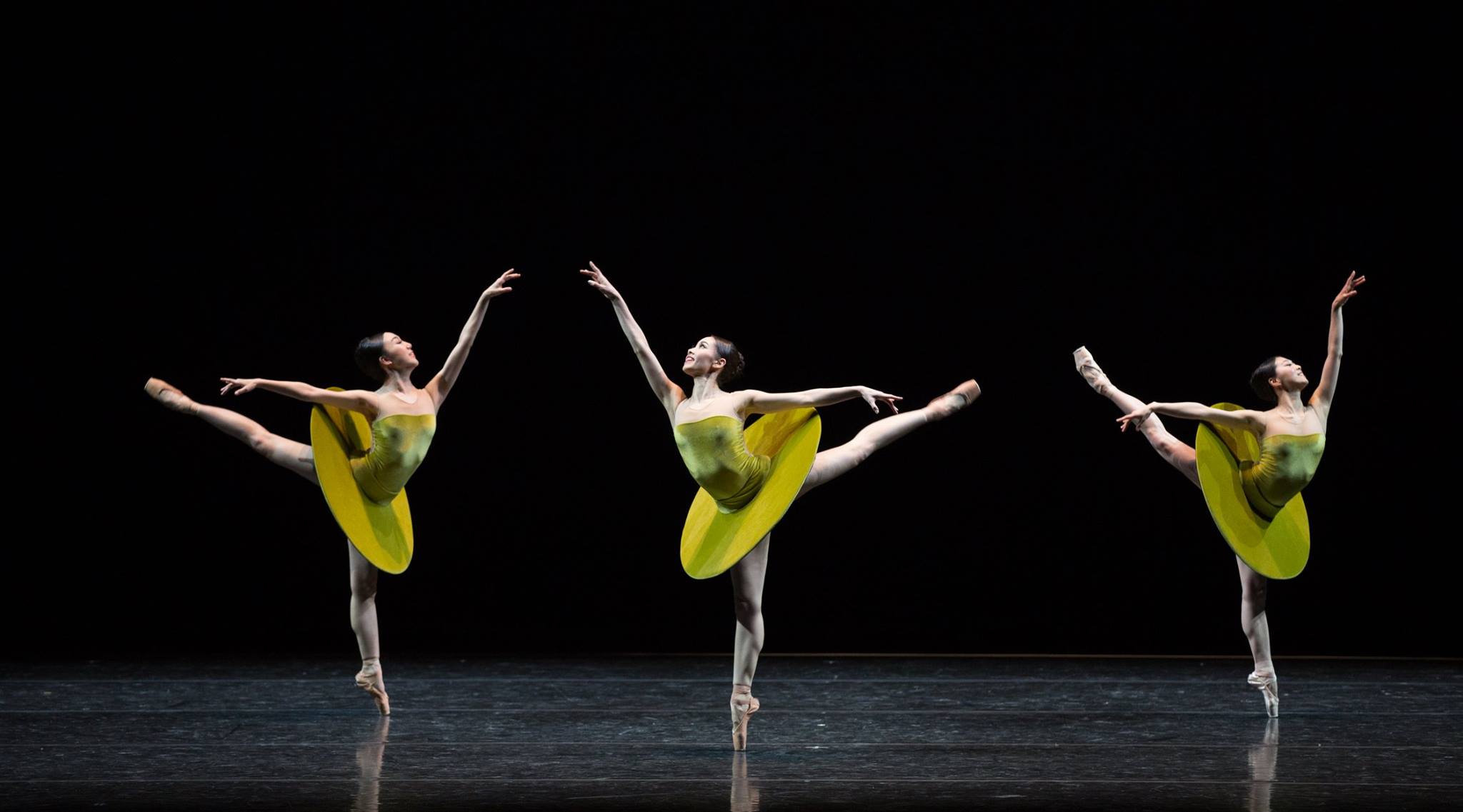An Evening of Kaleidoscopic Dance: A Review of Boston Ballet’s Kaleidoscope
Elizabith Costey ‘16/ Emertainment Monthly Staff Writer

The Boston Ballet presents an array of crowd pleasing ballets in its current performance of Kaleidoscope. Combining choreography by George Balanchine, Leonid Yakobson, William Forsythe, and Léonide Massine,Boston Ballet displays the extensive skill of its dancers. From technical precision, to theatrical narratives, Kaleidoscope encompasses it all.
The orchestra beckons the audience to their seats, and the lights dim in preparation for the first of the evening’s ballets, George Balanchine’s “Kammermusik No. 2”. The ballet begins with eight male dancers towards the back of the stage and two ballerinas featured in front. Before the dancers even move, the audience can tell that this piece is going to be different. The ballerinas’ wear their hair in pony tails, not the classic bun. Although they wear point shoes, something about their positioning seems ever so slightly off. And then the dance begins.
Addie Tapp and Lauren Herfindahl perform almost the exact same choreography, but one is always slightly behind the other. Not too fast, not too slow, their timing is impeccable. True to Balanchine’s style, the technique is spot on; the musicality is flawless. It is quick, and sharp, and clean. The movement style is graceful and classical, and yet there is also a distinctly modern element in Balanchine’s choreography. The occasional flexed foot, parallel position, and dropped chest lends the ballet a strange, but personable quality that appeals easily to the audience. At moments it even feels as if the dancers are playing with the audience, joking and jesting all the while performing remarkably elegant jetés, pirouettes, and lifts.

The second ballet begins after a short intermission. “Pas De Quatre” choreographed by Leonid Yakobson, a contemporary of George Balanchine, opens with the romantic melodies of Vincenzo Bellini’s Opera Norma. “Pas De Quatre” features four dancers in billowing, white dresses and flowery head pieces. Exceptionally graceful and elegant, the four dancers perform a majority of this ballet holding onto one another’s hands. They weave in and out of each others’ arms smoothly as if untying a ribbon, never once looking even remotely strained.
Eventually, the dancers release each other, allowing for more individual movement. Independently, the dancers are stunning. Their arms float through each movement as if moving through water before softly resting in their new position. In quick, successive solos, the choreography becomes more playful. The individual dancers smile at the audience, quickening the steps and jumps to match the music. The piece ends with all four ballerinas on stage. They remain in a close circle, reaching out to each other but not quite touching as the curtain descends.
Not even minutes later, the third ballet of the evening begins. “The Vertiginous Thrill of Exactitude”, choreographed by William Forsythe, is the embodiment of classical ballet in the modern age. Rooted in rigorous ballet technique, “The Vertiginous Thrill of Exactitude” is 11 minutes of skill and precision. Every movement is grand. Every jeté, every pirouette, and even every toe tap is somehow expanded.

Though this ballet is extremely classical in nature, fresh twists can be seen in the speed and vivacity of the piece and costuming (lime green leotards with a flopping disk for a tutu for the ladies and purple, velvet leotard with shorts for the gentlemen). With its clever quirks, thorough technique, and rapid precision, “The Vertiginous Thrill of Exactitude” was spectacular to behold.
Far from the dynamic, classical ballet mastery of William Forsythe’s choreography, The Boston Ballet’s final performance of the evening was a melee of animated music, colorful characters, and flirtatious fun. Léonide Massine’s “Gaîté Parisienne” opens with the energetic music of Jacques Offenbach. The main curtain ascends, revealing a secondary curtain in vibrant colors, announcing the “Gaîté Parisienne”. Beyond the second curtain lies a Parisian café during the height of the romantic belle époque era. The audience laughs and applauds throughout the lively comedy, amazed by the colorful costumes and humorous mix of characters. No matter where one looks, there is something happening. But be careful, with so many characters, it’s easy to miss the subtler moments, such as a butler struggling to clean the grand windows or the Peruvian gentleman sharing a dramatic tale.
With its verve and humor, “Gaîté Parisienne” was the perfect finale to an evening of kaleidoscopic dance. Ranging from classical ballet, to modern, to theater and comedy, the Boston Ballet’s Kaleidoscope was a wonderful event with both skill and personality.
For tickets, prices, and showings go to: http://www.bostonballet.org/kaleidoscope/
For Future Performances: http://www.bostonballet.org/tickets-and-performances.html